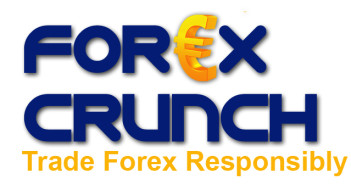As the US economy shows signs of slowdown, the Federal Reserve might intervene to boost the economy by buying assets – spilling dollars. This prediction, by the Japanese Nomura bank goes hand in hand with a very sharp drop in the dollar across the board. Is the dollar going for an accelerated collapse like in March 2009?
We’ve seen a sharp risk rally today – EUR/USD, GBP/USD, AUD/USD, NZD/USD rallied, USD/CAD dropped, while the “safe haven” currencies – the Swissy and the yen, didn’t move much against the dollar. This collapse of dollar continues the trend that we’ve seen in recent weeks, yet the scale was stronger. Here’s why:
The Federal Reserve meets on August 10th for the rate decision. The recent economic data shows that the economy is slowing down – no double dip recession, at least not yet, but certainly a slowdown.
Paul Sheard, global chief economist at at the Japanese Bank Nomura, suggests that the central bank won’t wait for a double-dip recession to be confirmed, but will act in the form of renewing quantitative easing steps by buying assets once again.
The meaning of buying assets, or enlarging the Fed’s balance sheet is printing dollars. And the meaning of printing dollars is devaluing the dollar.
Reminder of March 2009
On March 18th 2009, the FOMC decided on buying assets in a total value of 1.25 trillion dollars. This announcement of this inconceivable sum sent EUR/USD to a 600 pip leap and began a long term move that lasted for about 9 months, peaking at 1.5144 in December 2009.
Stock markets bottomed out and after the crisis and began rising. The price of oil bottomed out and began rising as well.
The US dollar lost ground across the board. A small reminder in the shape of a knee jerk reaction was seen now.
Dollar collapses with the article
In an article published on CNBC at 7:17 GMT (3:17 Eastern Time), Sheard is quoted:
“We therefore think the committee will return to the explicit language of early 2009, in which it articulated a commitment to ‘keep the size of the Federal Reserve’s balance sheet at a high level,’” he added.
I’m mentioning the publication timing of the article due to the market reaction at that time. A few currencies began a move at this timing – USD/CAD fell below the support line of 1.0280, GBP/USD moved above Friday’s 1.5720 peak (highest in 5 months), and AUD/USD jumped to a three month high, 0.9118, before continuing higher. All the moves happened just after the article was released.
Euro, Stocks and oil celebrate
EUR/USD began moving only during the New York session, but it also made an impressive move, above the tough 1.3114 and reached out for 1.32. This accelerated the move in the US dollar index, that made a big plunge from 81.55 to 80.90 at the time of writing.
US stock market indices are also rising strongly and so is oil. Crude oil leaped above $80, reaching almost $82 – the highest level in three months. This boosts loonie bulls.
If the Federal Reserve indeed announces new quantitative easing programs / dollar printing, I don’t think the effect will be as strong and as sustainable as in March 2009, as it won’t be a huge surprise like last time. Nevertheless, the US dollar will significantly weaken on such a scenario.
Want to see what other traders are doing in real accounts? Check out Currensee. It’s free..
